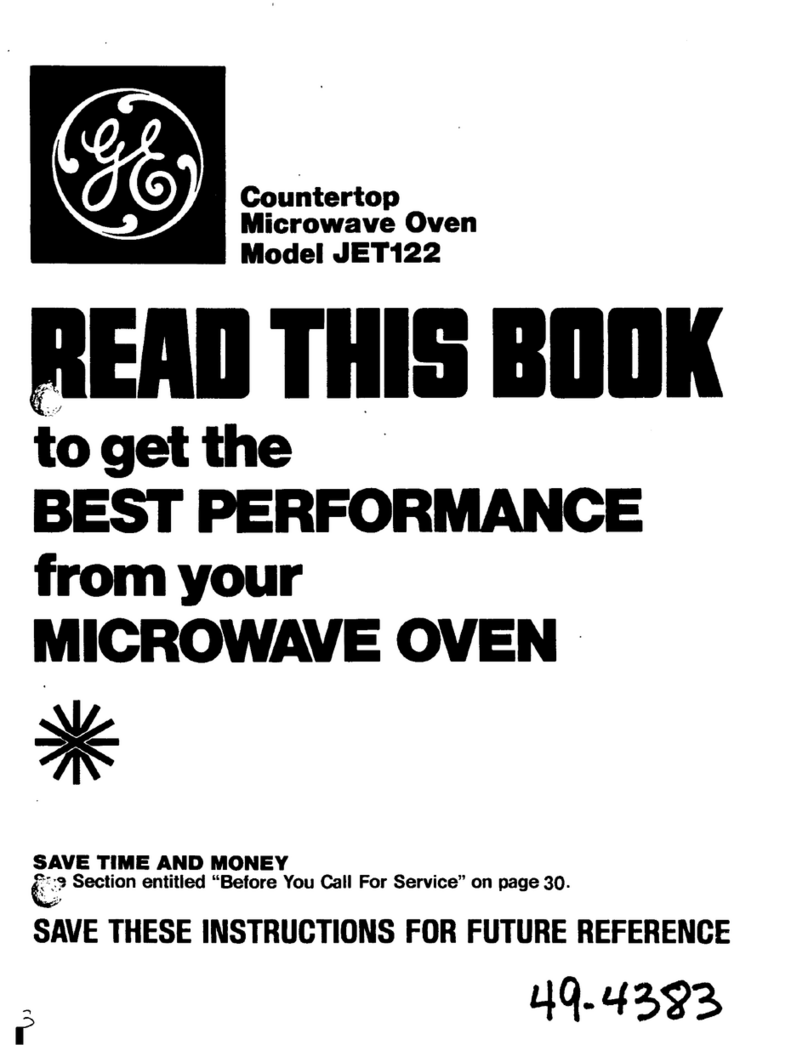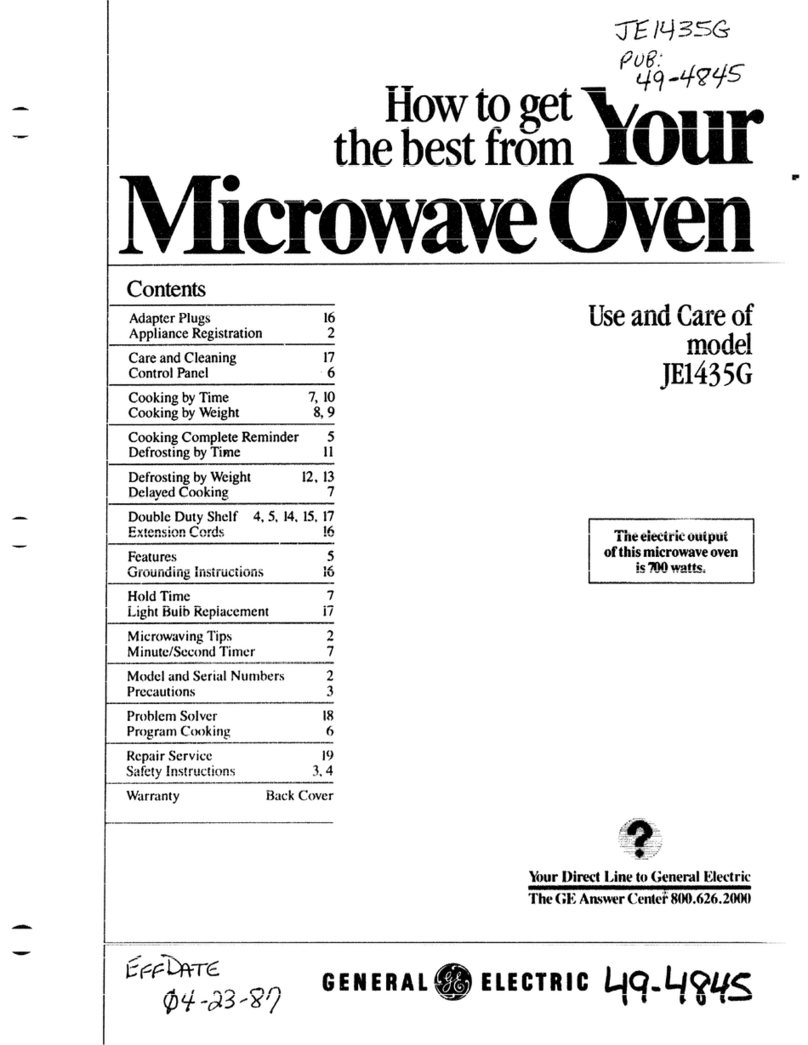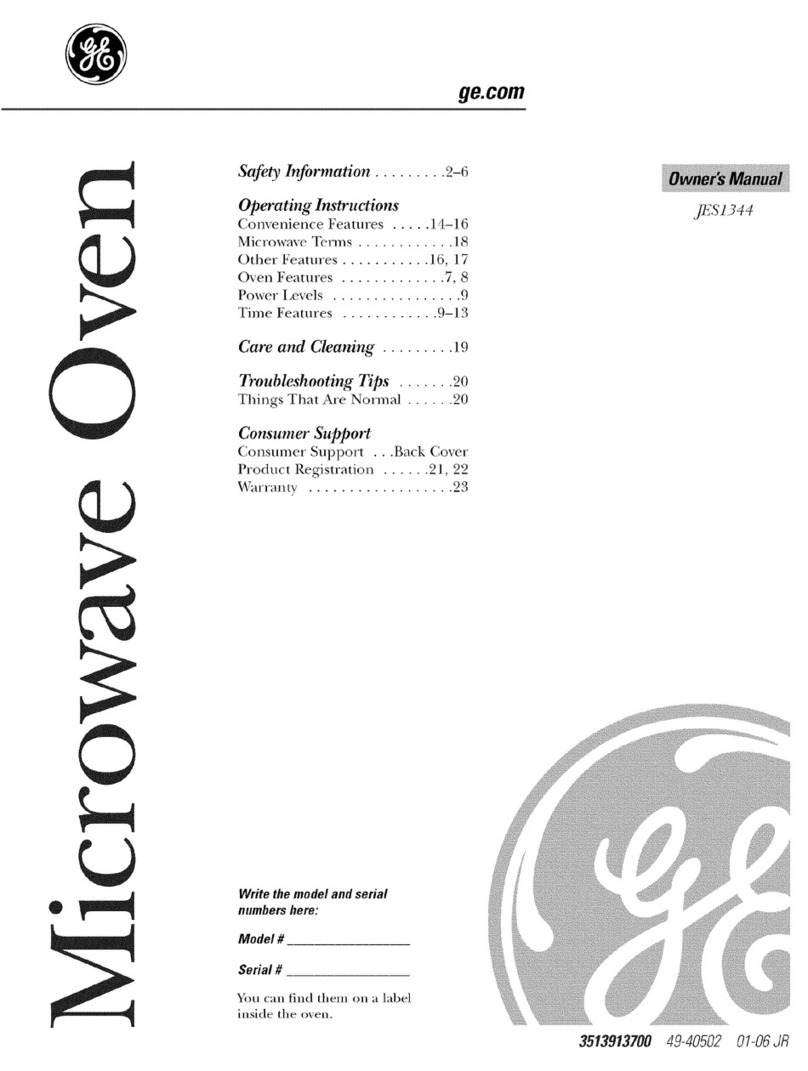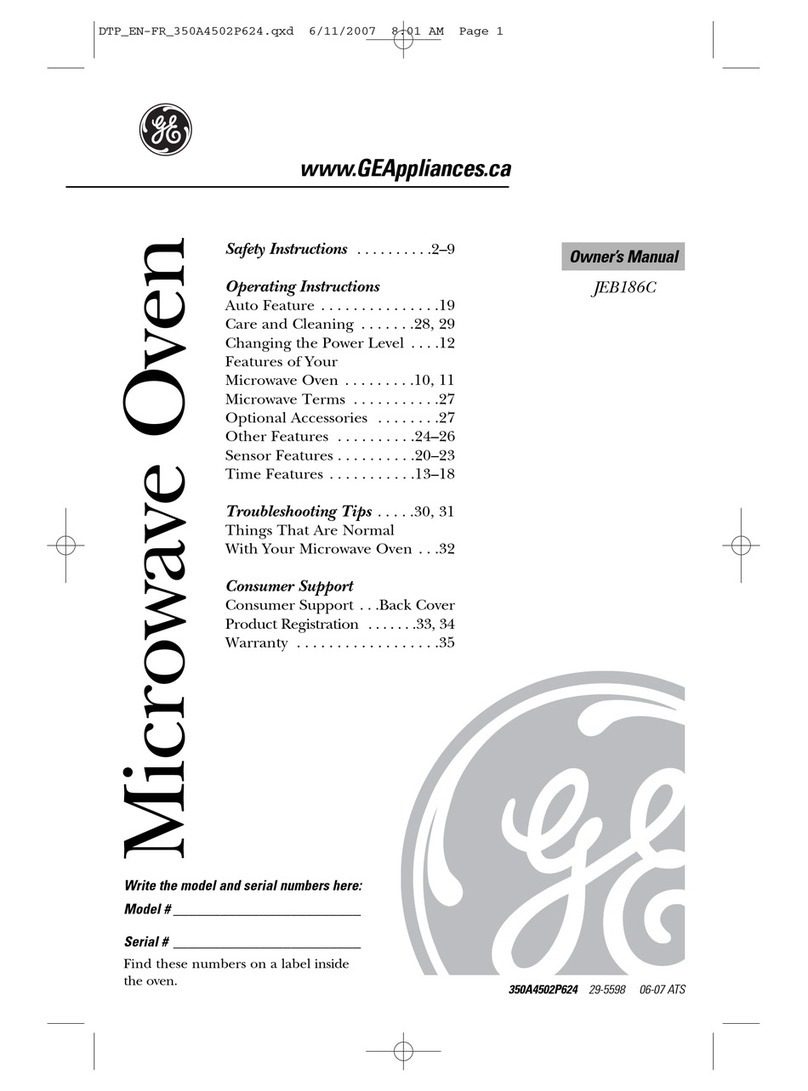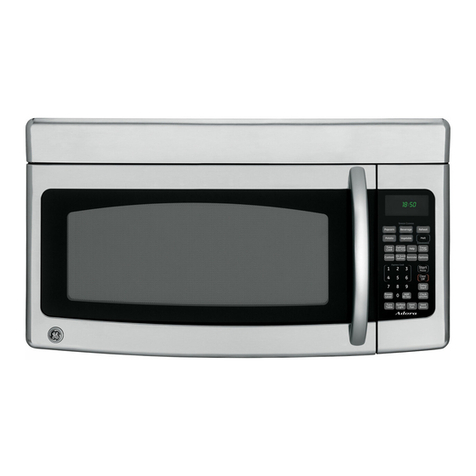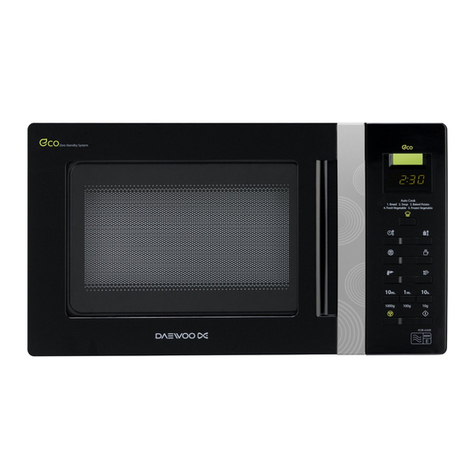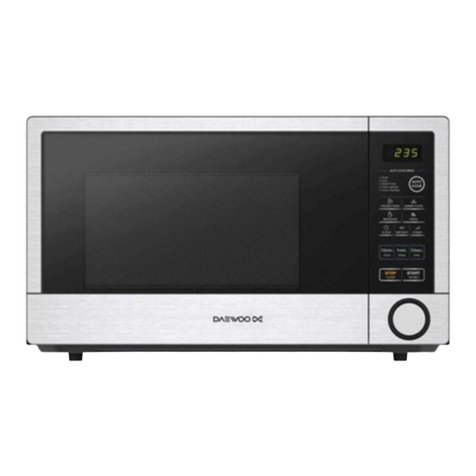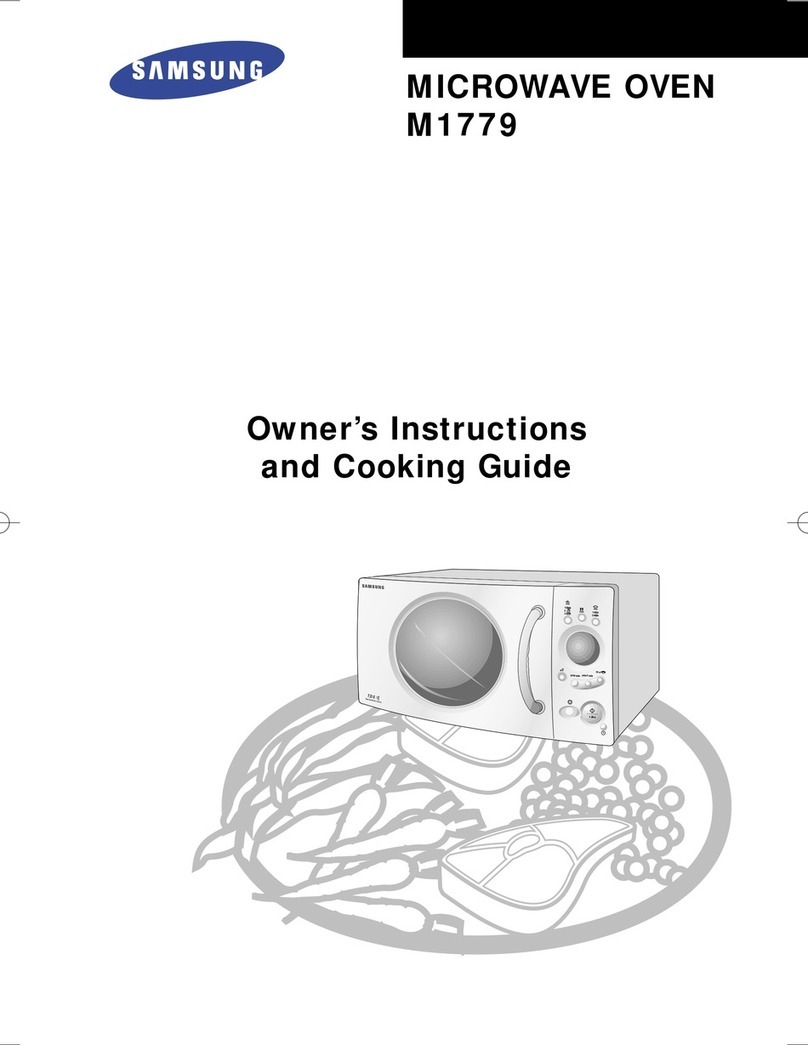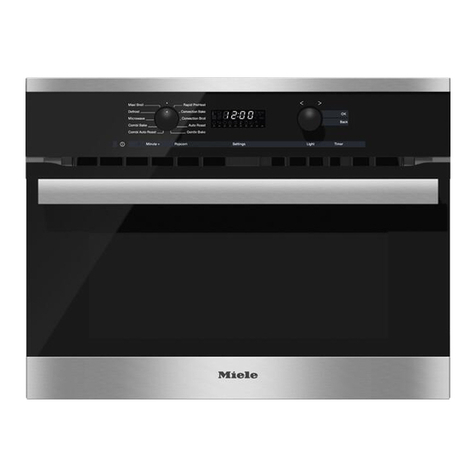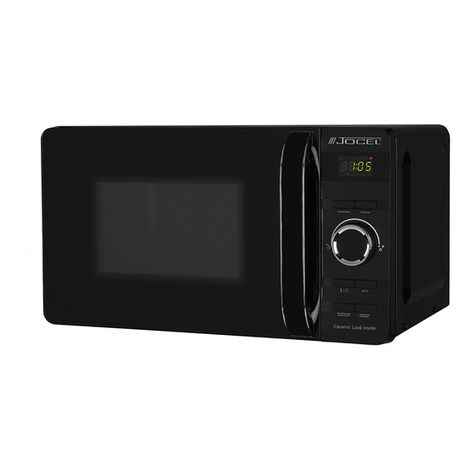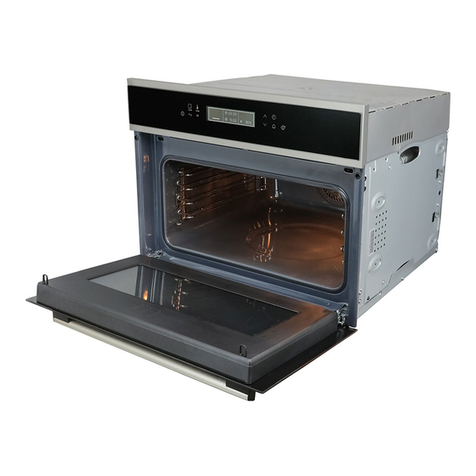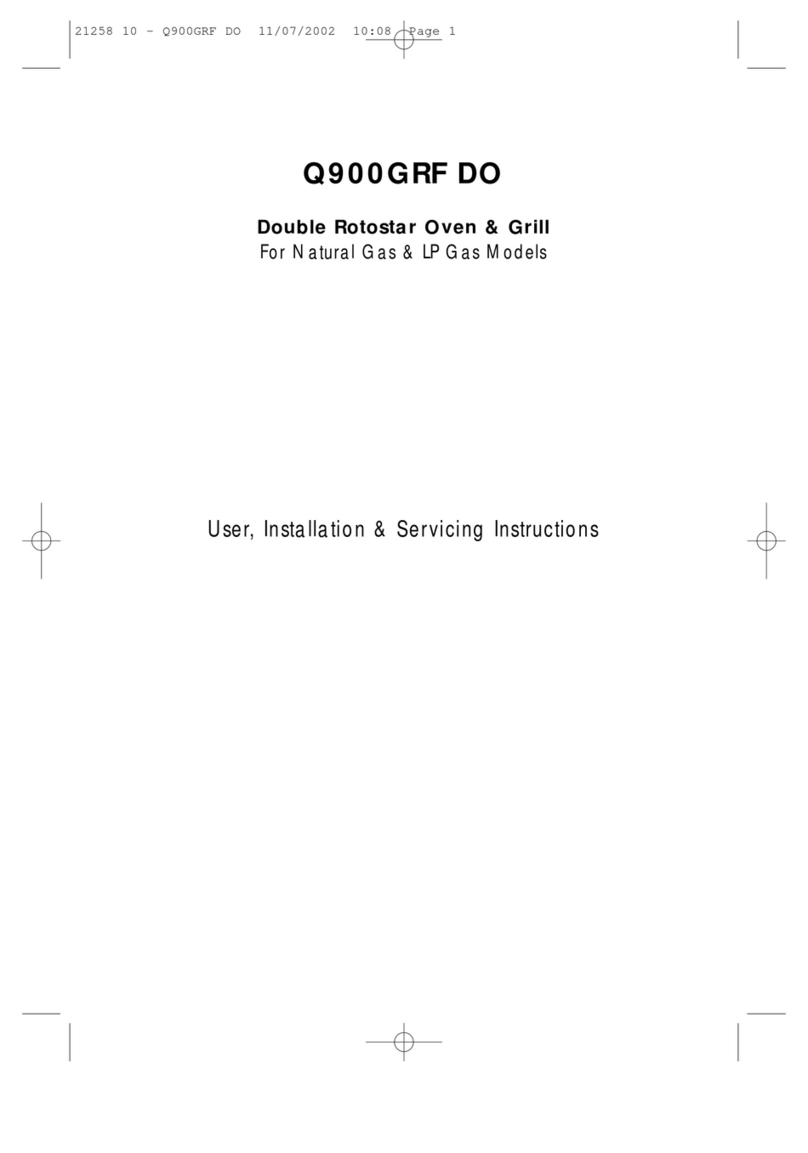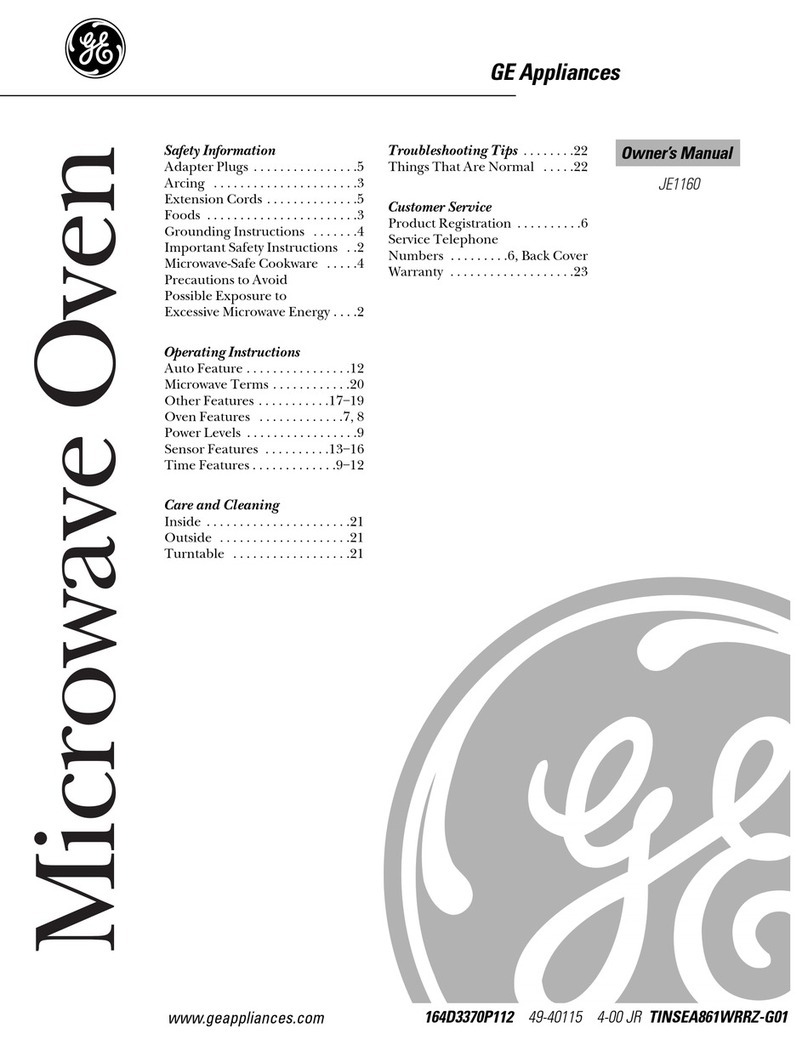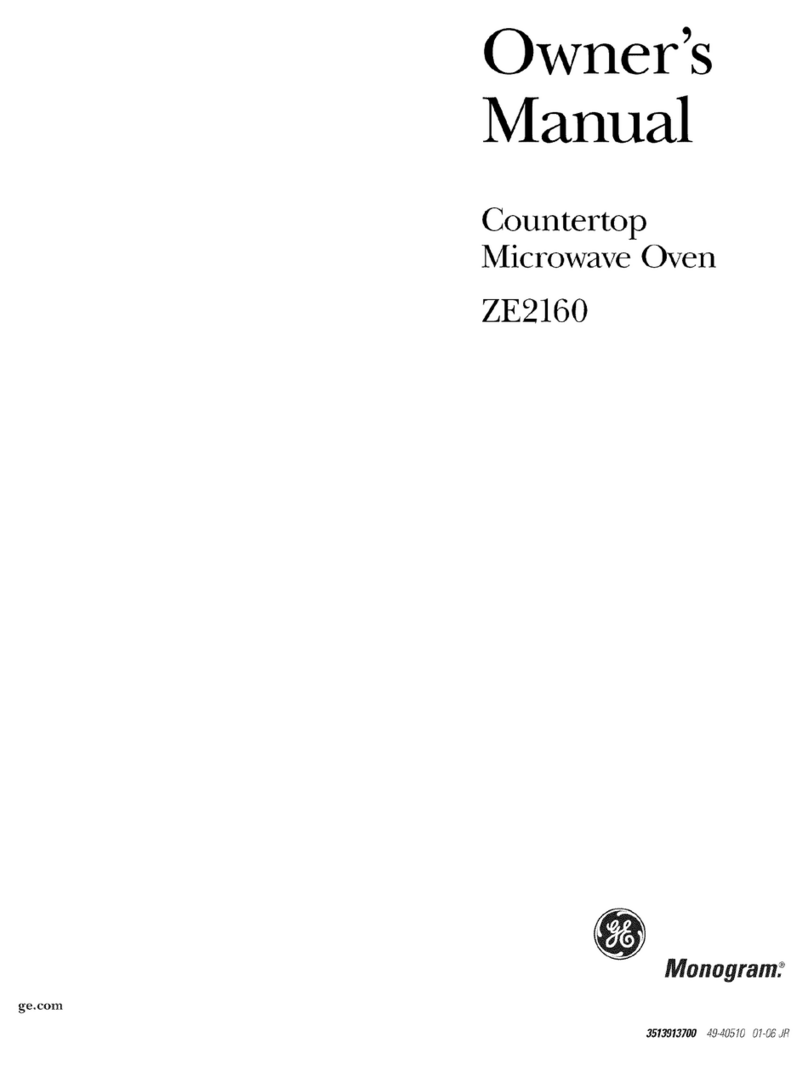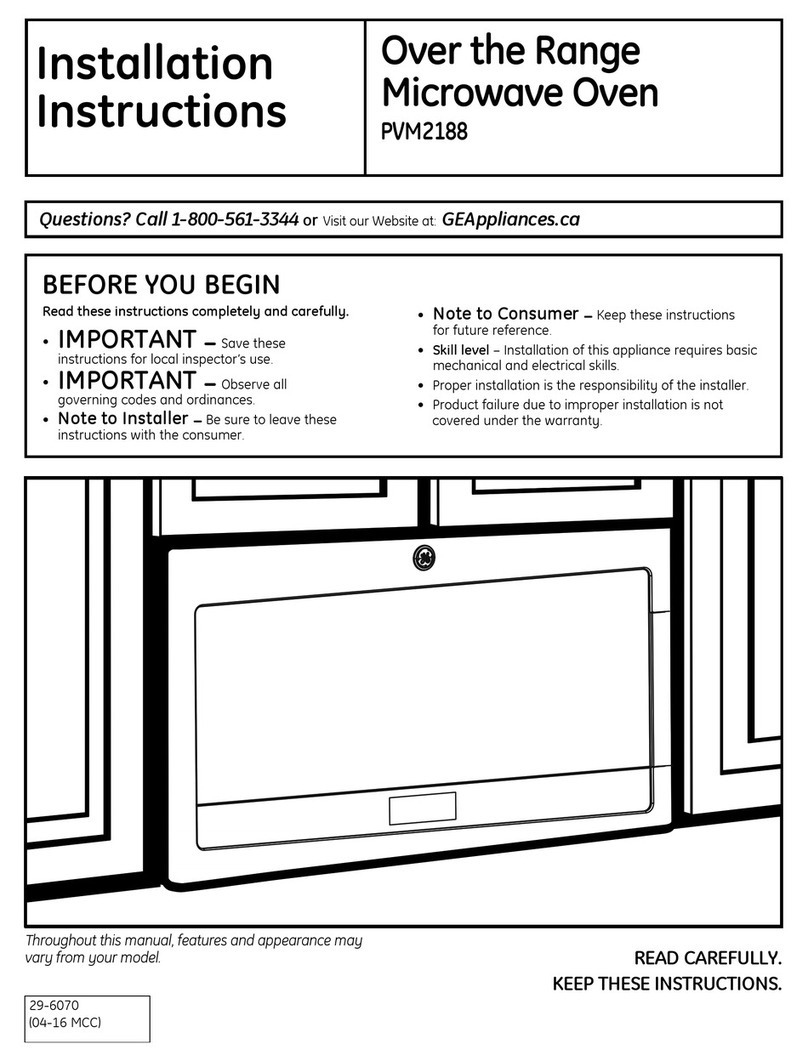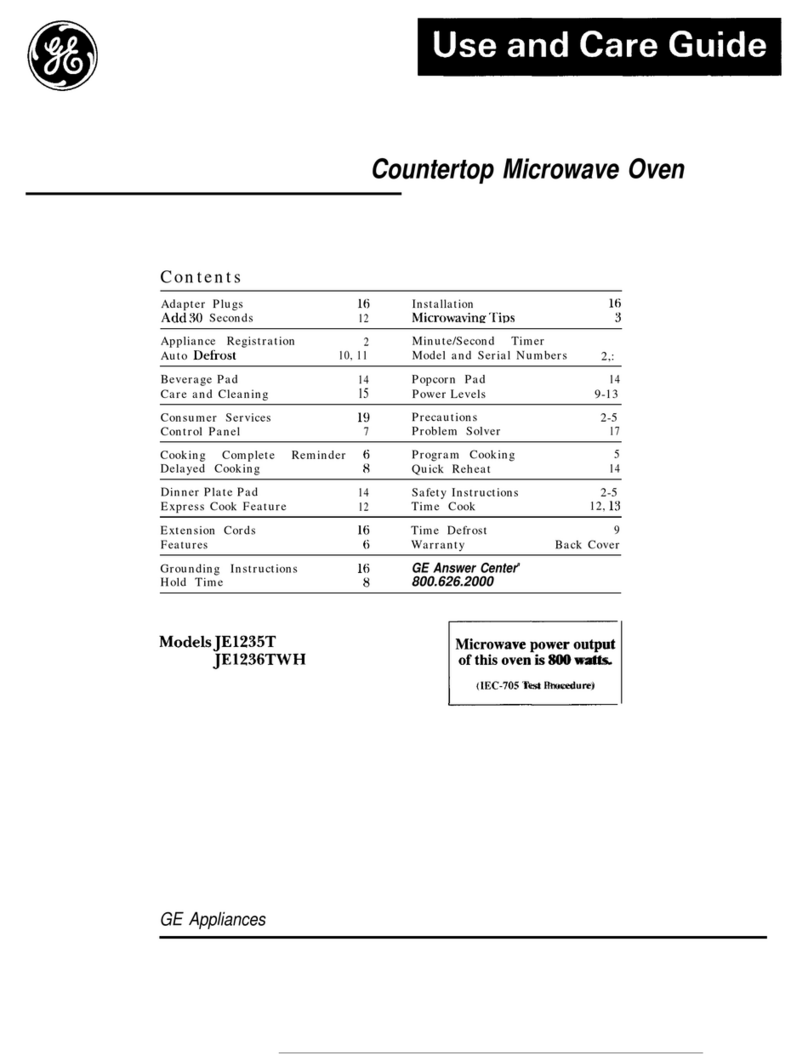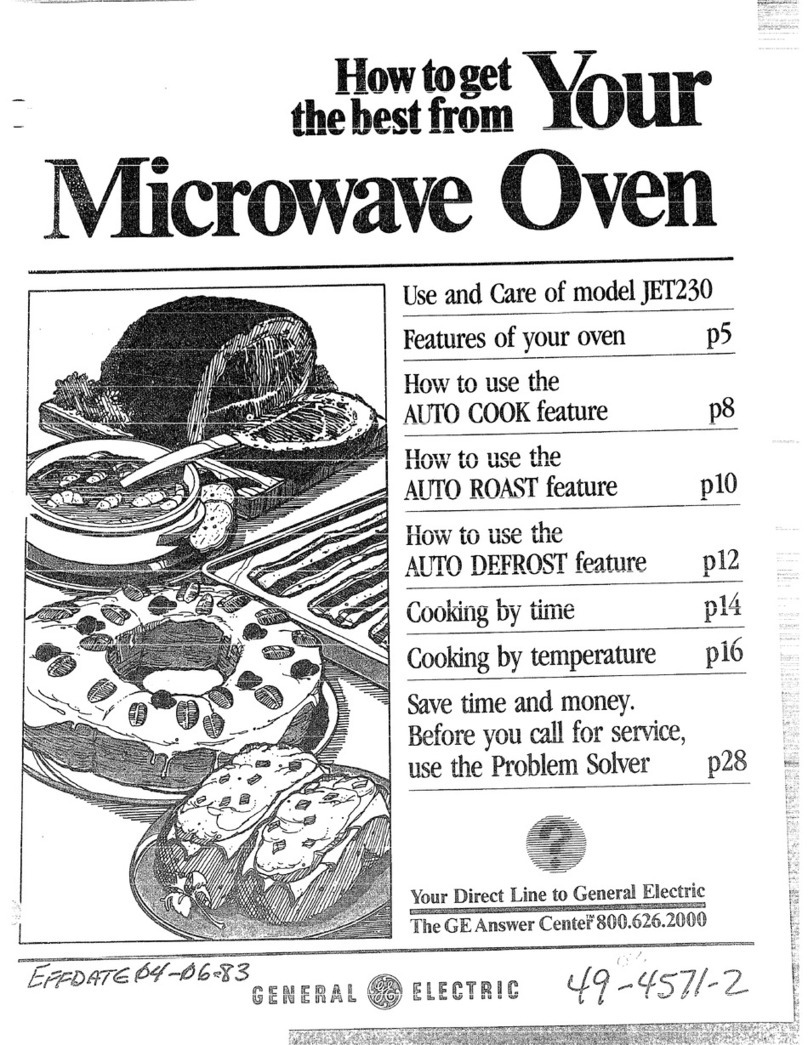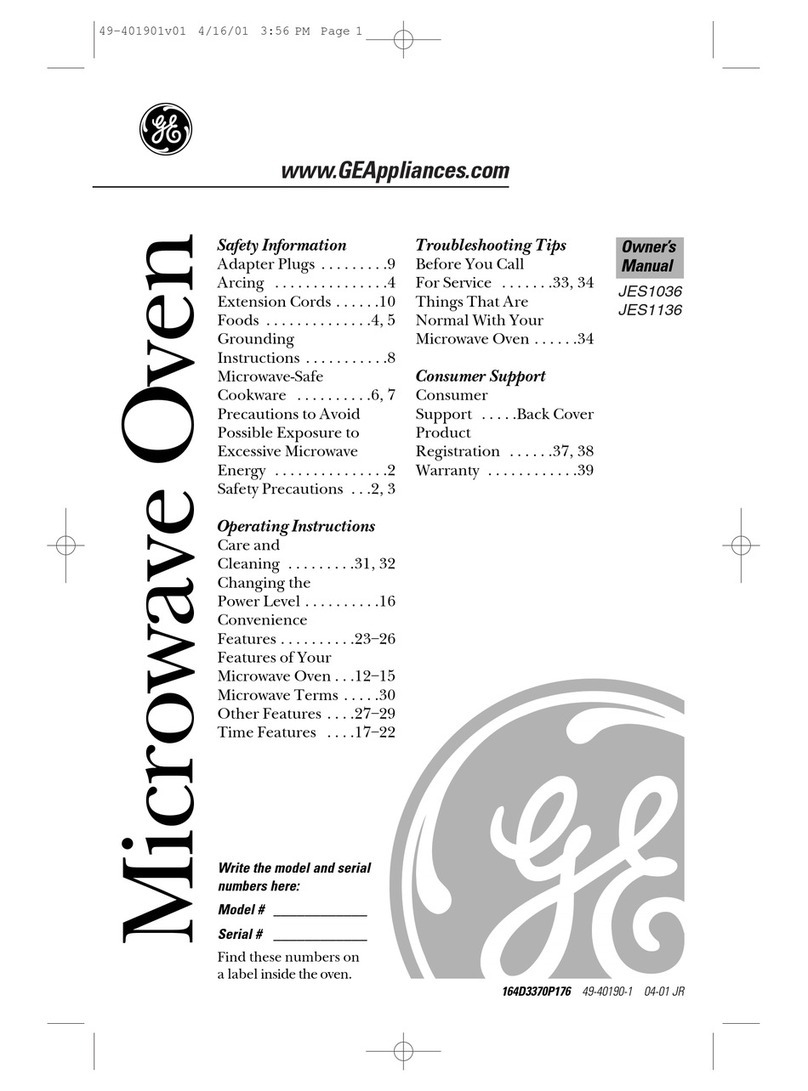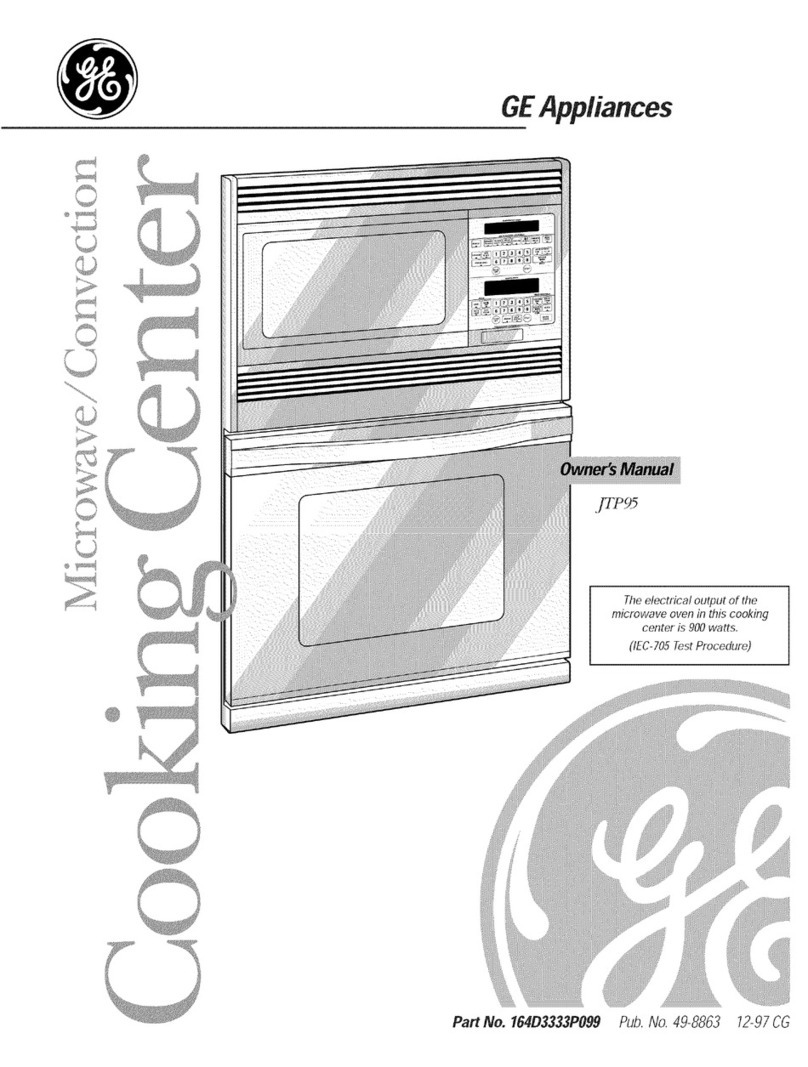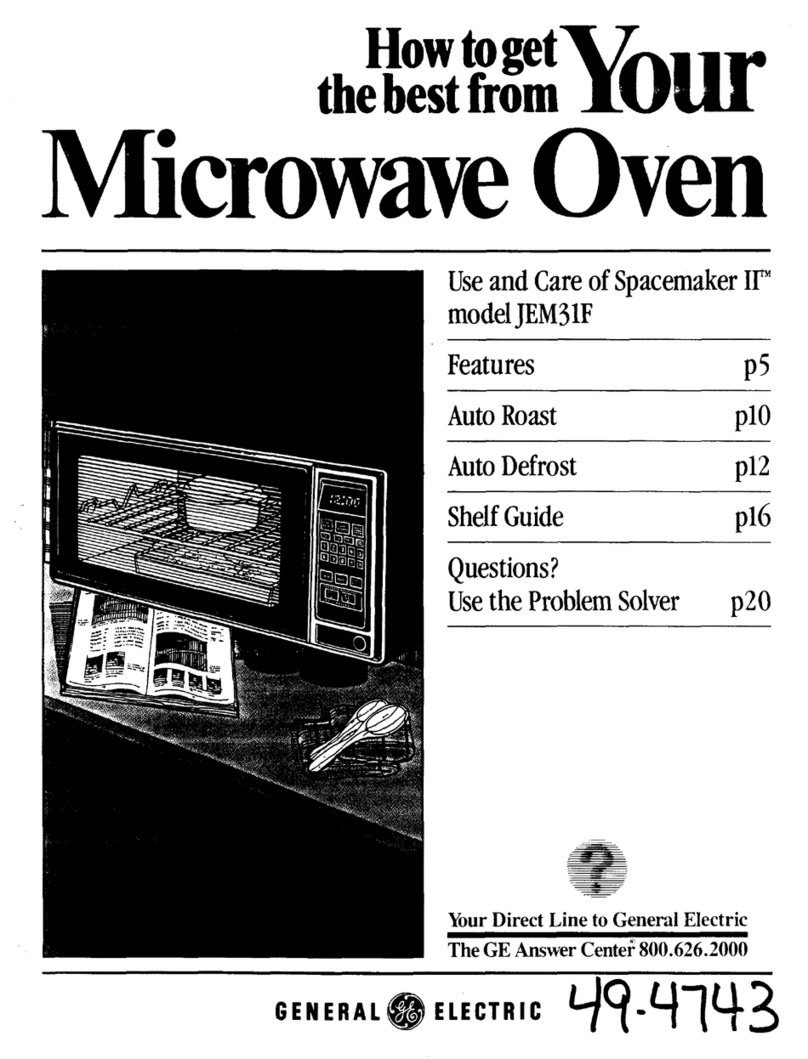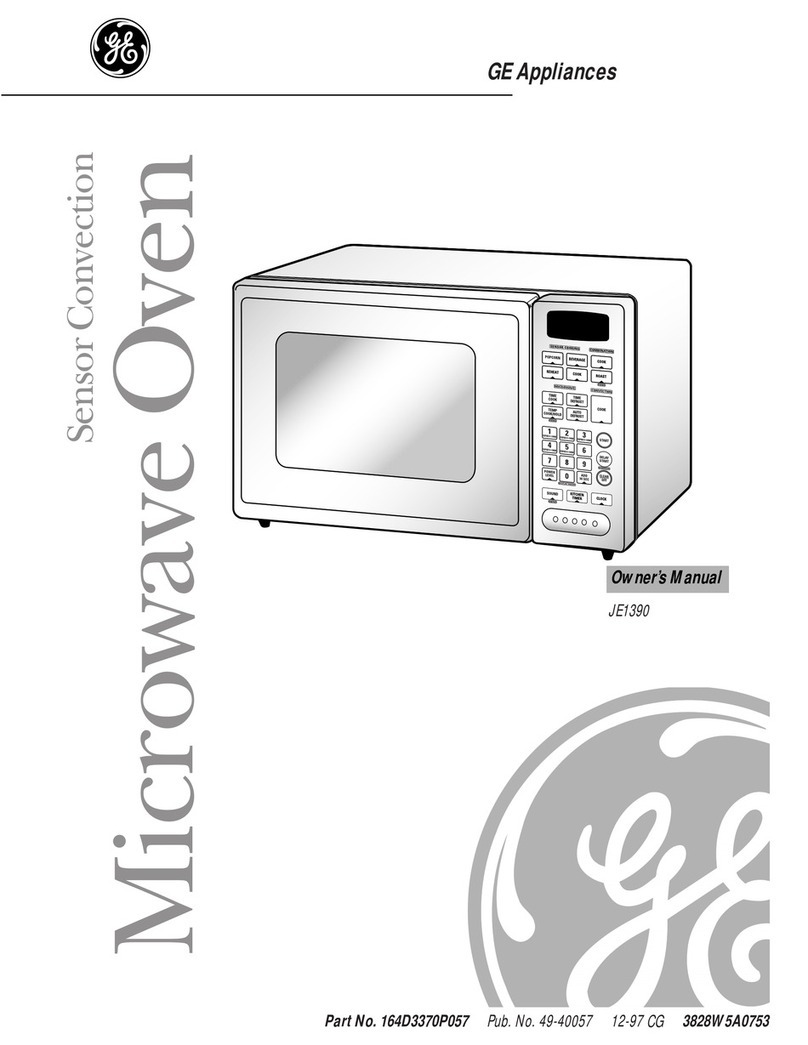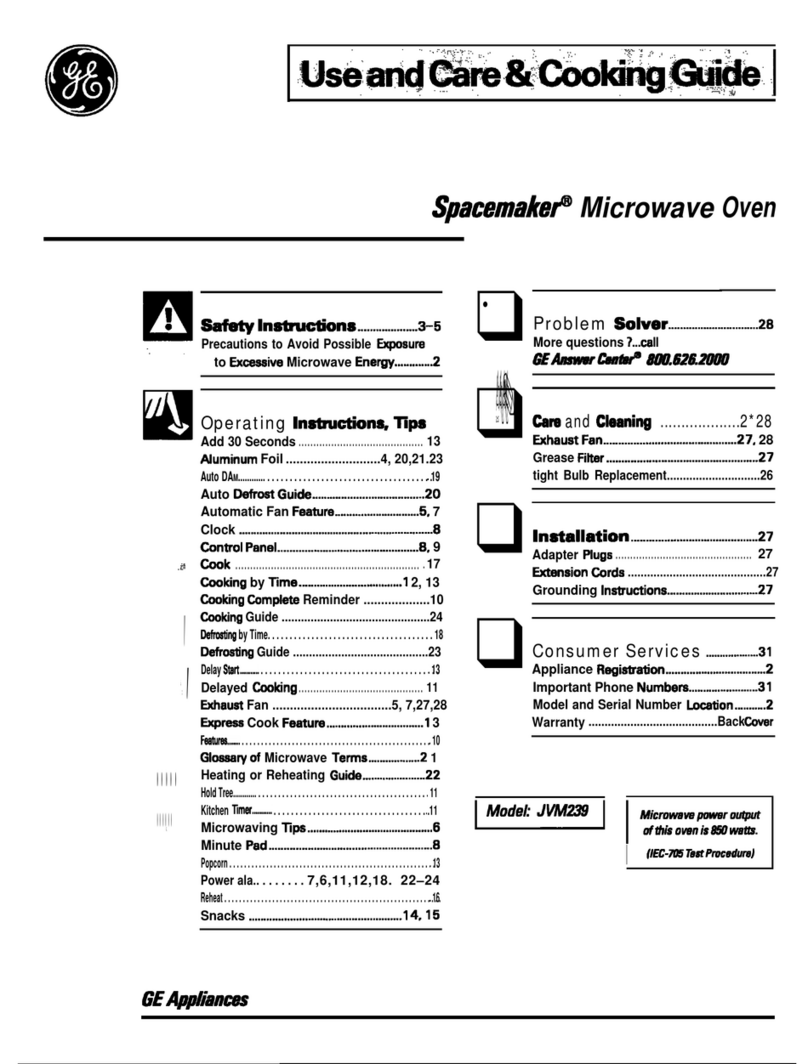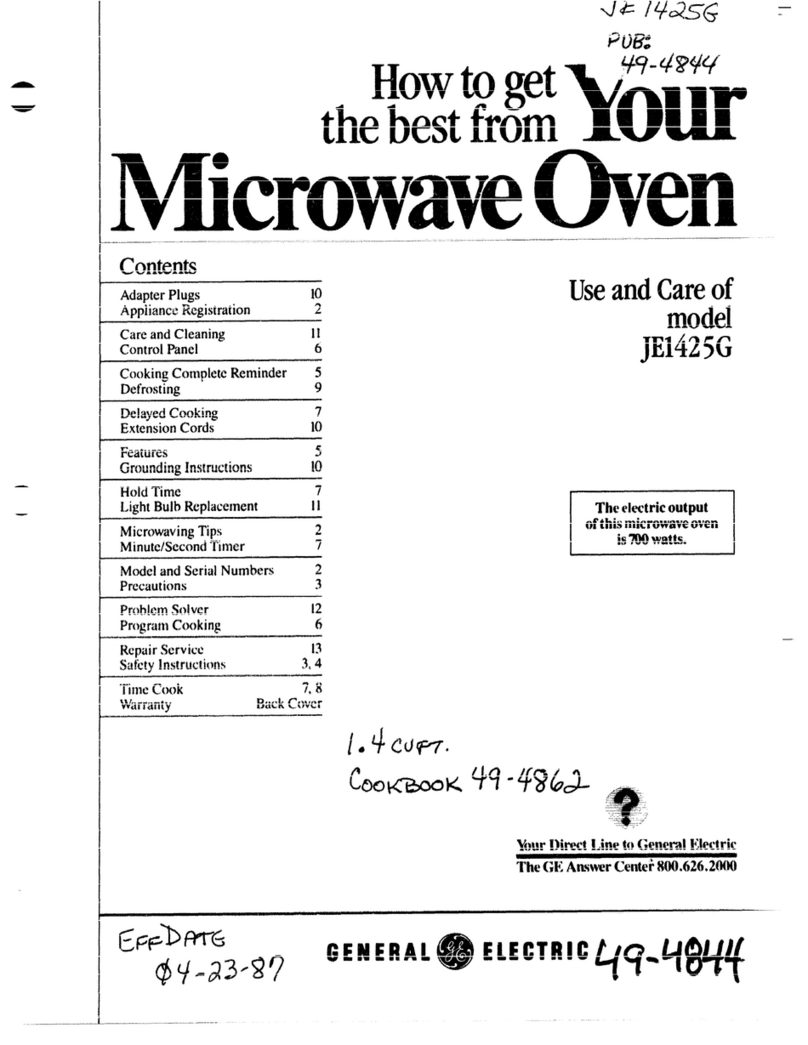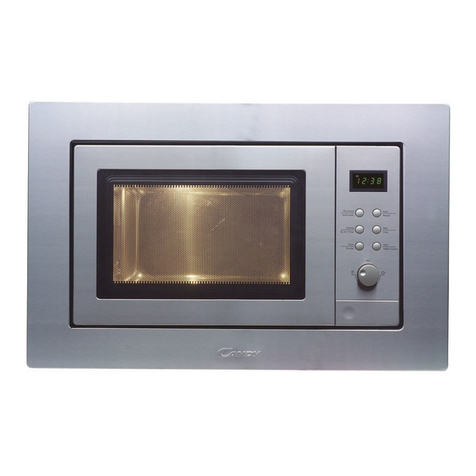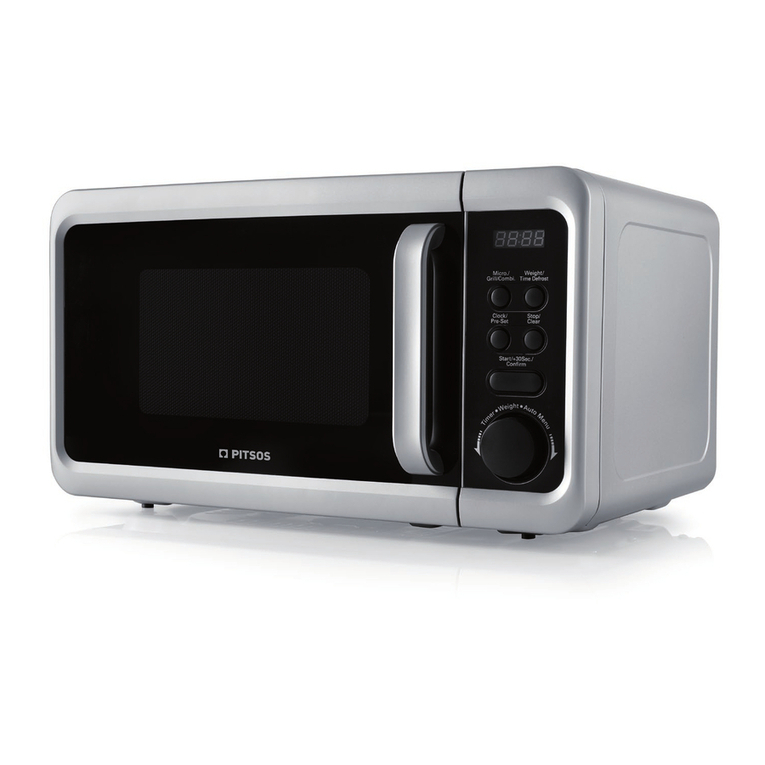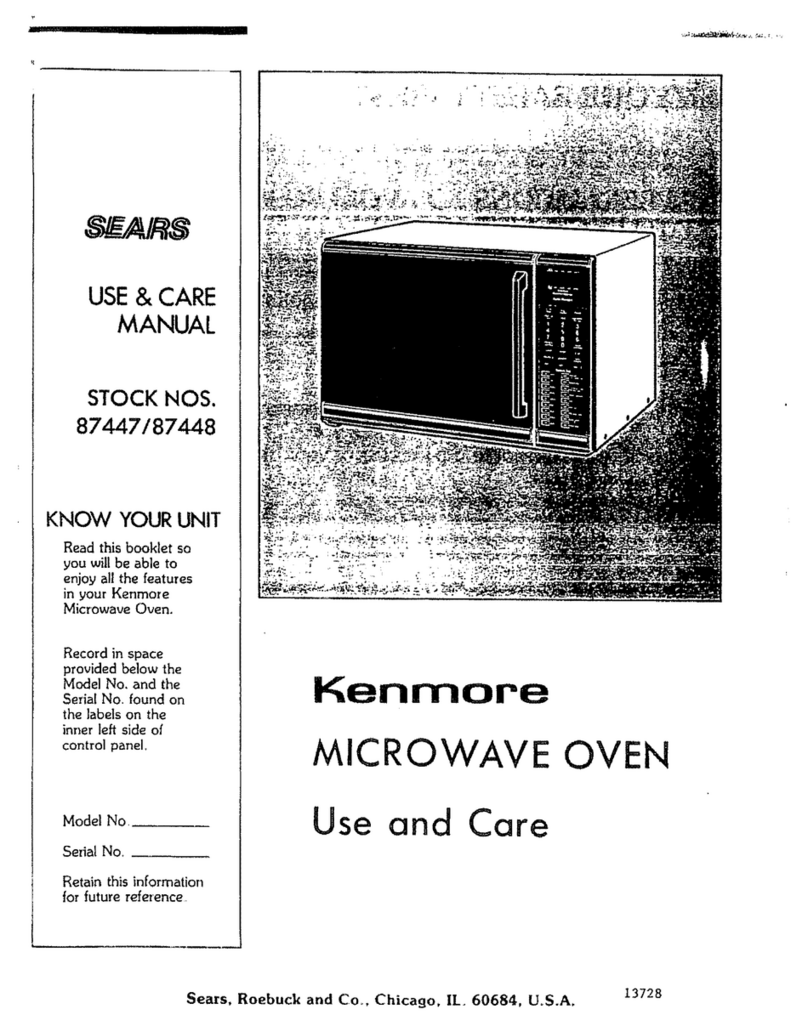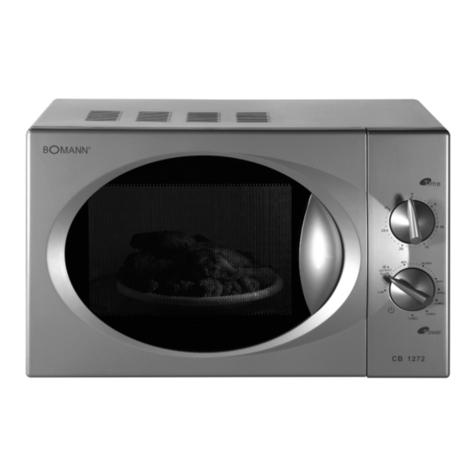3
SAFETY INSTRUCTIONS
SPECIAL NOTES ABOUT
MICROWAVING
ARCING
If you s arcing, pr ss th CLEAR/OFF pad and corr ct th probl m.
Arcing is the microwave term for sparks in the oven. Arcing is
ca sed by:
• Metal or foil to ching the side of the oven.
• Foil not molded to food ( pt rned edges act like antennas).
• Metal, s ch as twist-ties, po ltry pins or gold-rimmed dishes,
in the microwave.
• Recycled paper towels containing small metal pieces being sed
in the microwave.
FOODS
• Do not pop popcorn in yo r microwave oven nless in a special
microwave popcorn accessory or nless yo se popcorn labeled
for se in microwave ovens.
• Some prod cts s ch as whole eggs and sealed containers—for
example, closed jars—are able to explode and sho ld not be heated
in this microwave oven. S ch se of the microwave oven co ld res lt
in inj ry.
• Do not boil eggs in a microwave oven. Press re will b ild p inside
egg yolk and will ca se it to b rst, possibly res lting in inj ry.
• Operating the microwave with no food inside for more than a
min te or two may ca se damage to the oven and co ld start
a fire. It increases the heat aro nd the magnetron and can
shorten the life of the oven.
• Foods with nbroken o ter “skin” s ch as potatoes, hot dogs,
sa sages, tomatoes, apples, chicken livers and other giblets,
and egg yolks sho ld be pierced to allow steam to escape
d ring cooking.
SAFETY FACT
SUPERHEATED WATER
Liquids, such as wat r, coff or t a ar abl to b ov rh at d
b yond th boiling point without app aring to b boiling. Visibl
bubbling or boiling wh n th contain r is r mov d from th
microwav ov n is not always pr s nt. THIS COULD RESULT
IN VERY HOT LIQUIDS SUDDENLY BOILING OVER WHEN THE
CONTAINER IS DISTURBED OR A SPOON OR OTHER UTENSIL
IS INSERTED INTO THE LIQUID.
To red ce the risk of inj ry to persons:
— Do not overheat the liq id.
— Stir the liq id both before and halfway thro gh heating it.
— Do not se straight-sided containers with narrow necks.
— After heating, allow the container to stand in the microwave oven
for a short time before removing the container.
— Use extreme care when inserting a spoon or other tensil into the
container.
• Avoid heating baby food in glass jars, even with the lid off. Make
s re all infant food is thoro ghly cooked. Stir food to distrib te the
heat evenly. Be caref l to prevent scalding when warming form la.
The container may feel cooler than the form la really is. Always test
the form la before feeding the baby.
• Don’t defrost frozen beverages in narrow-necked bottles (especially
carbonated beverages). Even if the container is opened, press re
can b ild p. This can ca se the container to b rst, possibly
res lting in inj ry.
• Hot foods and steam can ca se b rns. Be caref l when opening
any containers of hot food, incl ding popcorn bags, cooking
po ches and boxes. To prevent possible inj ry, direct steam away
from hands and face.
• Do not overcook potatoes. They co ld dehydrate and catch
fire, ca sing damage to yo r oven.
• Cook meat and po ltry thoro ghly—meat to at least an INTERNAL
temperat re of 160°F and po ltry to at least an INTERNAL temperat re
of 180°F. Cooking to these temperat res s ally protects against
foodborne illness.
MICROWAVE-SAFE COOKWARE
Make s re all cookware sed in yo r microwave oven is s itable for
microwaving. Most glass casseroles, cooking dishes, meas ring c ps,
c stard c ps, pottery or china dinnerware which does not have
metallic trim or glaze with a metallic sheen can be sed. Some
cookware is labeled “s itable for microwaving.”
• If yo are not s re if a dish is
microwave-safe, se this test: Place in
the oven both the dish yo are testing
and a glass meas ring c p filled with
1 c p of water—set the meas ring c p
either in or next to the dish. Microwave 1 min te at high. If the dish
heats, it sho ld not be sed for microwaving. If the dish remains
cool and only the water in the c p heats, then the dish is
microwave-safe.
• If yo se a meat thermometer while cooking, make s re it is safe
for se in microwave ovens.
IMPORTANT SAFETY INFORMATION.
READ ALL INSTRUCTIONS BEFORE USING.
